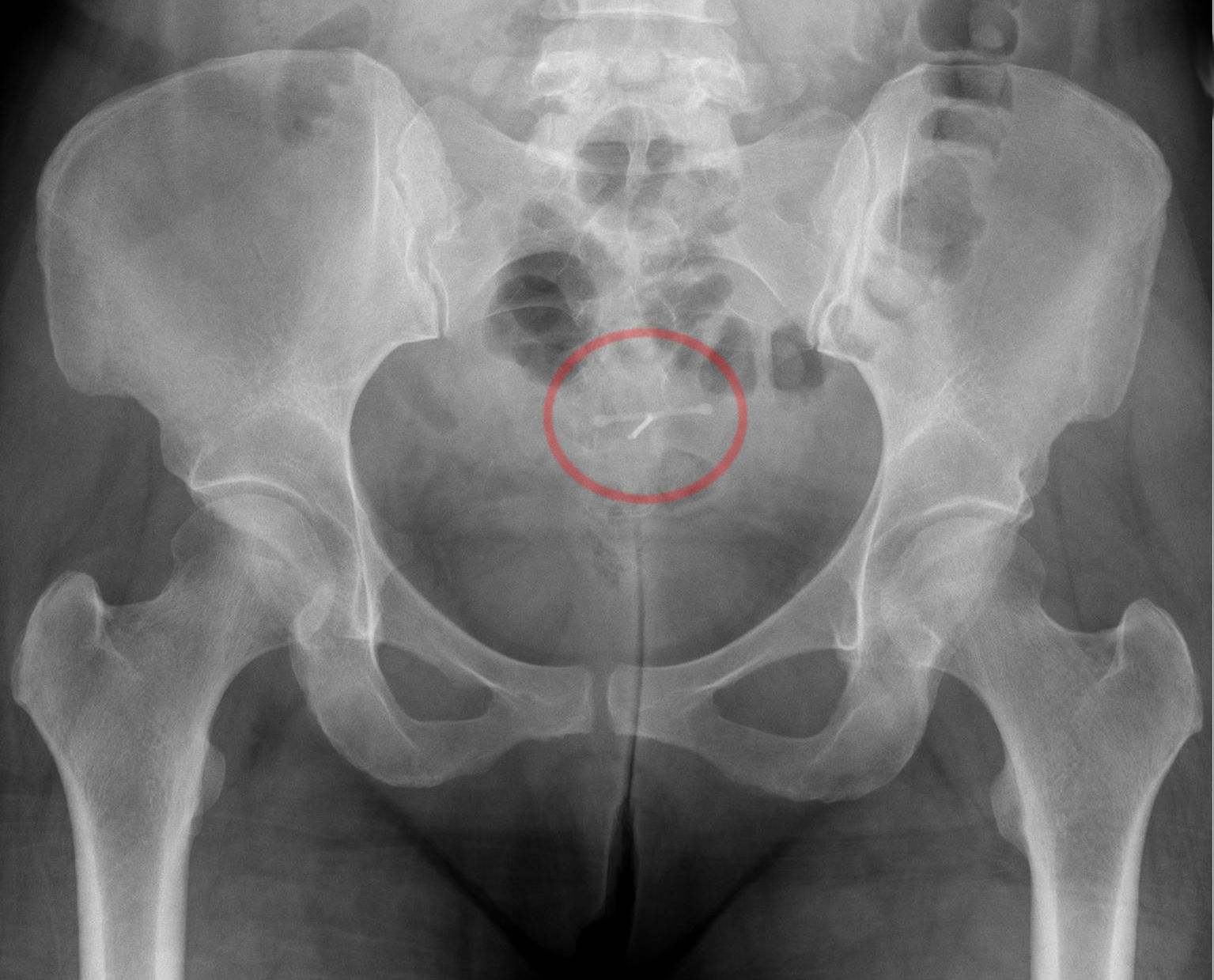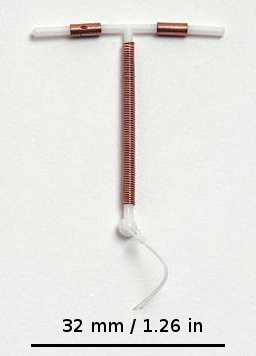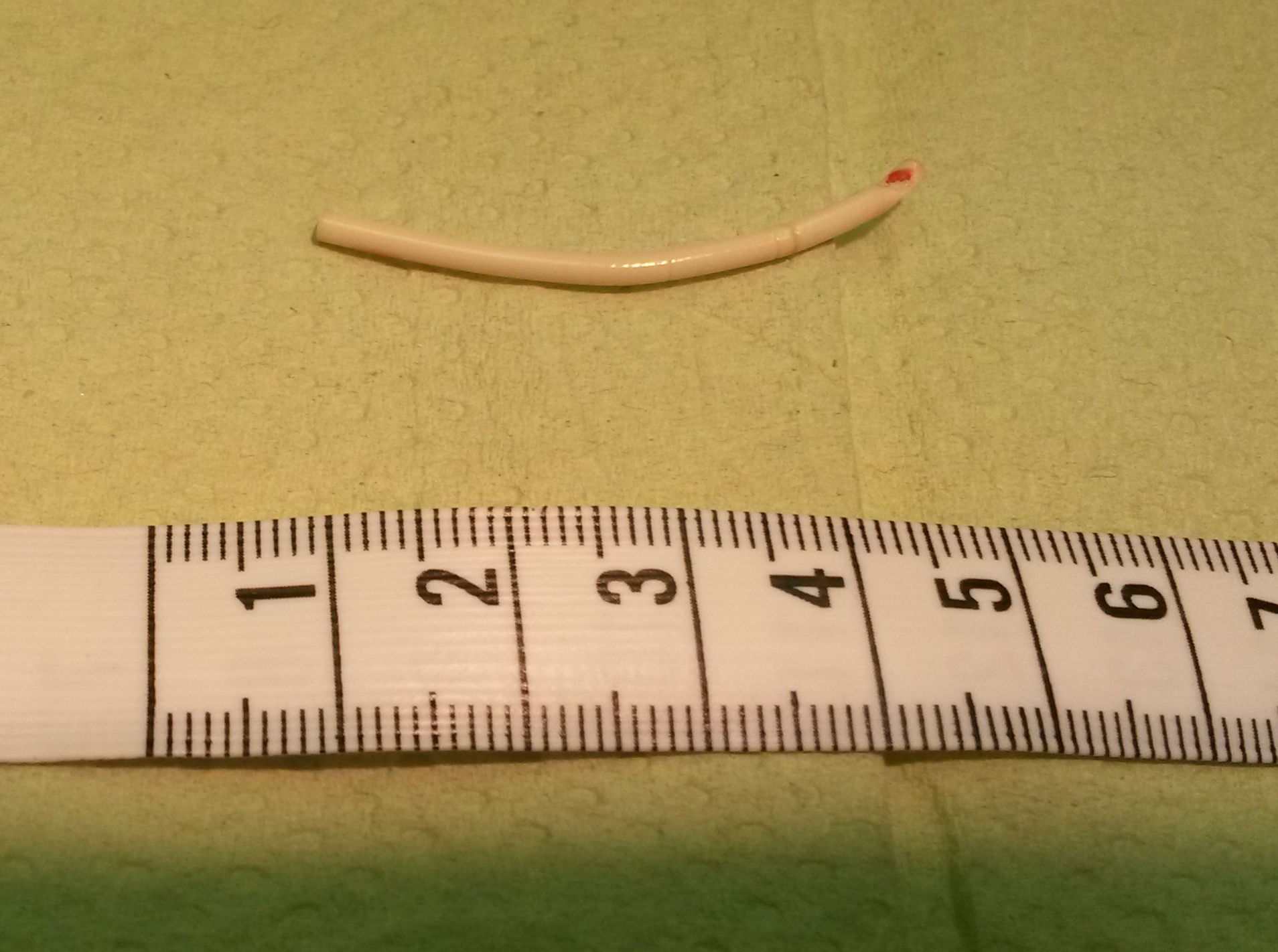|
IUDs
An intrauterine device (IUD), also known as an intrauterine contraceptive device (IUCD or ICD) or coil, is a small, often T-shaped birth control device that is inserted into the uterus to prevent pregnancy. IUDs are a form of Long-acting reversible contraceptives, long-acting reversible contraception (LARC). The use of IUDs as a form of birth control dates from the 1800s. A previous model known as the Dalkon shield was associated with an increased risk of pelvic inflammatory disease (PID). However, current models do not affect PID risk in women without sexually transmitted infections during the time of insertion. Although copper IUDs may increase menstrual bleeding and result in painful cramps, hormonal IUDs may reduce menstrual bleeding or stop menstruation altogether. However, women can have daily spotting for several months after insertion, and it can take up to three months for there to be a 90% decrease in bleeding with hormonal IUDs. Cramping can be treated with Nonstero ... [...More Info...] [...Related Items...] OR: [Wikipedia] [Google] [Baidu] |
Hormonal IUDs
A hormonal intrauterine device (IUD), also known as an intrauterine system (IUS) with progestogen and sold under the brand name Mirena among others, is an intrauterine device that releases a progestogen (medication), progestogenic hormonal agent such as levonorgestrel into the uterus. It is used for birth control, heavy menstrual periods, and to prevent endometrial hyperplasia, excessive build of the lining of the uterus in those on estrogen replacement therapy. It is one of the most effective forms of birth control with a one-year failure rate around 0.2%. The device is placed in the uterus and lasts three to eight years. Fertility often returns quickly following removal. Side effects include irregular periods, benign ovarian cysts, pelvic pain, and depression. Rarely uterine perforation may occur. Use is not recommended during pregnancy but is safe with breastfeeding. The IUD with progestogen is a type of long-acting reversible birth control. It works by thickening the mucus ... [...More Info...] [...Related Items...] OR: [Wikipedia] [Google] [Baidu] |
Copper IUD
A copper intrauterine device (IUD), also known as an intrauterine coil, copper coil, or non-hormonal IUD, is a form of long-acting reversible contraception and one of the most effective forms of birth control available. It can also be used for emergency contraception within five days of unprotected sex. The device is placed in the uterus and lasts up to twelve years, depending on the amount of copper present in the device. It may be used for contraception regardless of age or previous pregnancy, and may be placed immediately after a vaginal delivery, cesarean delivery, or surgical abortion. Following its removal, fertility quickly returns. Common side effects include Heavy menstrual bleeding, heavy menstrual periods and increased Dysmenorrhea, menstrual cramps (dysmenorrhea). Rarely, the device may come out or perforate the uterine wall. The copper IUD was initially developed in Germany in the early 1900s, but came into widespread medical use in the 1970s. It is on the WHO Model ... [...More Info...] [...Related Items...] OR: [Wikipedia] [Google] [Baidu] |
Birth Control
Birth control, also known as contraception, anticonception, and fertility control, is the use of methods or devices to prevent pregnancy. Birth control has been used since ancient times, but effective and safe methods of birth control only became available in the 20th century. Planning, making available, and using human birth control is called family planning. Some cultures limit or discourage access to birth control because they consider it to be morally, religiously, or politically undesirable. The World Health Organization and United States Centers for Disease Control and Prevention provide guidance on the safety of birth control methods among women with specific medical conditions. The most effective methods of birth control are sterilization by means of vasectomy in males and tubal ligation in females, intrauterine devices (IUDs), and implantable birth control. This is followed by a number of hormone-based methods including contraceptive pills, patches, vaginal r ... [...More Info...] [...Related Items...] OR: [Wikipedia] [Google] [Baidu] |
Long-acting Reversible Contraceptives
Long-acting reversible contraceptives (LARC) are methods of birth control that provide effective contraception for an extended period without requiring user action. They include hormonal and non-hormonal intrauterine devices (IUDs) and subdermal hormonal contraceptive implants. They are the most effective reversible methods of contraception because their efficacy is not reliant on patient compliance. The failure rates of IUDs and implants is less than 1% per year. LARCs are often recommended to people seeking convenient and cost effective contraception. In one study, LARC users saved thousands of dollars over a five-year period compared to those who buy condoms and birth control pills. LARCs can generally be safely and effectively used by people of any body weight, adolescents, and people who have not yet had children. In 2008, the American College of Obstetrics and Gynecologists (ACOG) launched The Long-Acting Reversible Contraception Program with the intention to reduce rates ... [...More Info...] [...Related Items...] OR: [Wikipedia] [Google] [Baidu] |
Contraceptive Implant
A contraceptive implant is an implantable medical device used for the purpose of birth control. The implant may depend on the timed release of hormones to hinder ovulation or sperm development, the ability of copper to act as a natural spermicide within the uterus, or it may work using a non-hormonal, physical blocking mechanism. As with other contraceptives, a contraceptive implant is designed to prevent pregnancy, but it does not protect against sexually transmitted infections. Women Implant The contraceptive implant is hormone-based and highly effective, approved in more than 60 countries and used by millions of women around the world. The typical implant is a small flexible tube measuring about in length. It is most commonly inserted subdermally in the inner portion of the upper, non-dominant arm by a trained and certified health care provider. After insertion, it prevents pregnancy by releasing progestin which inhibits ovulation. The two most common versions are the singl ... [...More Info...] [...Related Items...] OR: [Wikipedia] [Google] [Baidu] |
Emergency Contraception
Emergency contraception (EC) is a birth control measure, used after sexual intercourse to prevent pregnancy. There are different forms of EC. Emergency contraceptive pills (ECPs), sometimes simply referred to as emergency contraceptives (ECs), or the morning-after pill, are medications intended to disrupt or delay ovulation or fertilization, which are necessary for pregnancy. p. 121: Intrauterine devices (IUDs)usually used as a primary contraceptive methodare sometimes used as the most effective form of emergency contraception. However, the use of IUDs for emergency contraception is relatively rare. Definition Emergency contraception is a birth control measure taken to reduce the risk of pregnancy following unprotected sexual intercourse or when other regular contraceptive measures have not worked properly or have not been used correctly. It is intended to be used occasionally and is not the same as medical abortion. Emergency contraception is offered to women who do not ... [...More Info...] [...Related Items...] OR: [Wikipedia] [Google] [Baidu] |
Howard Tatum
Howard J. Tatum (1915 – 2002) was an American obstetrician. Along with Chilean physician Jaime Zipper, he invented the copper intrauterine device (IUD). The Tatum-T intrauterine device was the first T-shaped copper-bearing IUD to be sold in the United States, and his T-shaped design served as the foundation for other intrauterine devices. Early life and education Howard J. Tatum was born in Philadelphia, Pennsylvania in 1915. Tatum earned a Bachelor of Arts in chemistry in 1936 and a Ph.D. in pharmacology and toxicology in 1941. In 1945, he earned a Doctor of Medicine, and in 1949 a degree in obstetrics and gynecology. Career After completing his studies, Tatum was a professor of medicine in several American Universities. In 1966, Tatum became the associate director and senior scientist at the Center of Biomedical Research at the Population Council in New York City. Tatum was a founding member of the Association of Planned Parenthood Physicians, and served as its board ... [...More Info...] [...Related Items...] OR: [Wikipedia] [Google] [Baidu] |
Tenrei Ōta
Tenrei Ōta ( Japanese: ''Ōta Tenrei''), born Takeo Ōta (太田 武夫 ''Ōta Takeo'', 1900–1985) was a Japanese obstetrician-gynaecologist and politician. He invented the Ōta ring, an early intrauterine device (IUD). Throughout his life, he was an outspoken advocate for contraception, abortion, and euthanasia. Some of his beliefs were rooted in eugenics, and during his time as a member of Japan's House of Representatives, he drafted and co-sponsored the Eugenic Protection Law. Early life and education Takeo Ōta was born in 1900 to a physician's family in the Migochi village of the Kyoto Prefecture in Japan. In 1925, he earned his doctorate from Kyushu University. He then specialised in gynaecology at Kyoto University. He studied human cancer cells to obtain his Ph.D. from Kyoto University, but was denied his degree in 1934 due to his "leftist inclinations". After Japan was defeated in World War II, he was awarded the degree. Career Ōta began studying contraceptiv ... [...More Info...] [...Related Items...] OR: [Wikipedia] [Google] [Baidu] |
Gräfenberg's Ring
Gräfenberg's ring is a flexible ring of silk suture, later versions of which were wrapped in silver wire. It was an early IUD, a birth control device. Gräfenberg's ring was the first IUD used by a significant number of women. The ring was introduced by German gynecologist Ernst Gräfenberg in 1929. It ceased to be in wide use circa 1939. Inserting a foreign device into the uterus causes an inflammatory response, which creates a hostile environment for sperm. The silver wire used to construct later versions of Gräfenberg's ring was contaminated with copper, which increases this spermicidal effect. In 1934, Japanese physician Tenrei Ōta developed a variation of the Gräfenberg ring that contained a supportive structure in the center. The addition of this central disc lowered the IUD's expulsion rate. However, insertion of these devices caused high rates of infection and were condemned by the medical community. Furthermore, their use and development was stifled by World Wa ... [...More Info...] [...Related Items...] OR: [Wikipedia] [Google] [Baidu] |
Jaime Zipper
Jaime Zipper (20 January 1926 – 16 March 2011) was a Chilean physician and scientist who, with American Howard Tatum, created the first T-shaped copper intrauterine device. Zipper discovered the contraceptive properties of intrauterine copper. Early life and education The child of Polish Jews Gustavo Zipper and Juana Antonia Abragan, Jaime Zipper was born in Lviv, Ukraine. The family moved to Mulchén, Chile, and then to Santiago. He studied at the Liceo José Victorino Lastarria and subsequently completed his secondary education at the Internado Nacional Barros Arana. From an early age, Zipper showed a deep interest in science, and went on to study medicine at the Universidad de Chile. He earned his doctoral degree in 1953 with a thesis entitled "Contribución al estudio de la Hidatidosis en Chile" (). In his final three years of study, he was an assistant professor of parasitology. Between 1961 and 1962, he was a postdoctoral researcher in reproductive physiology at t ... [...More Info...] [...Related Items...] OR: [Wikipedia] [Google] [Baidu] |






